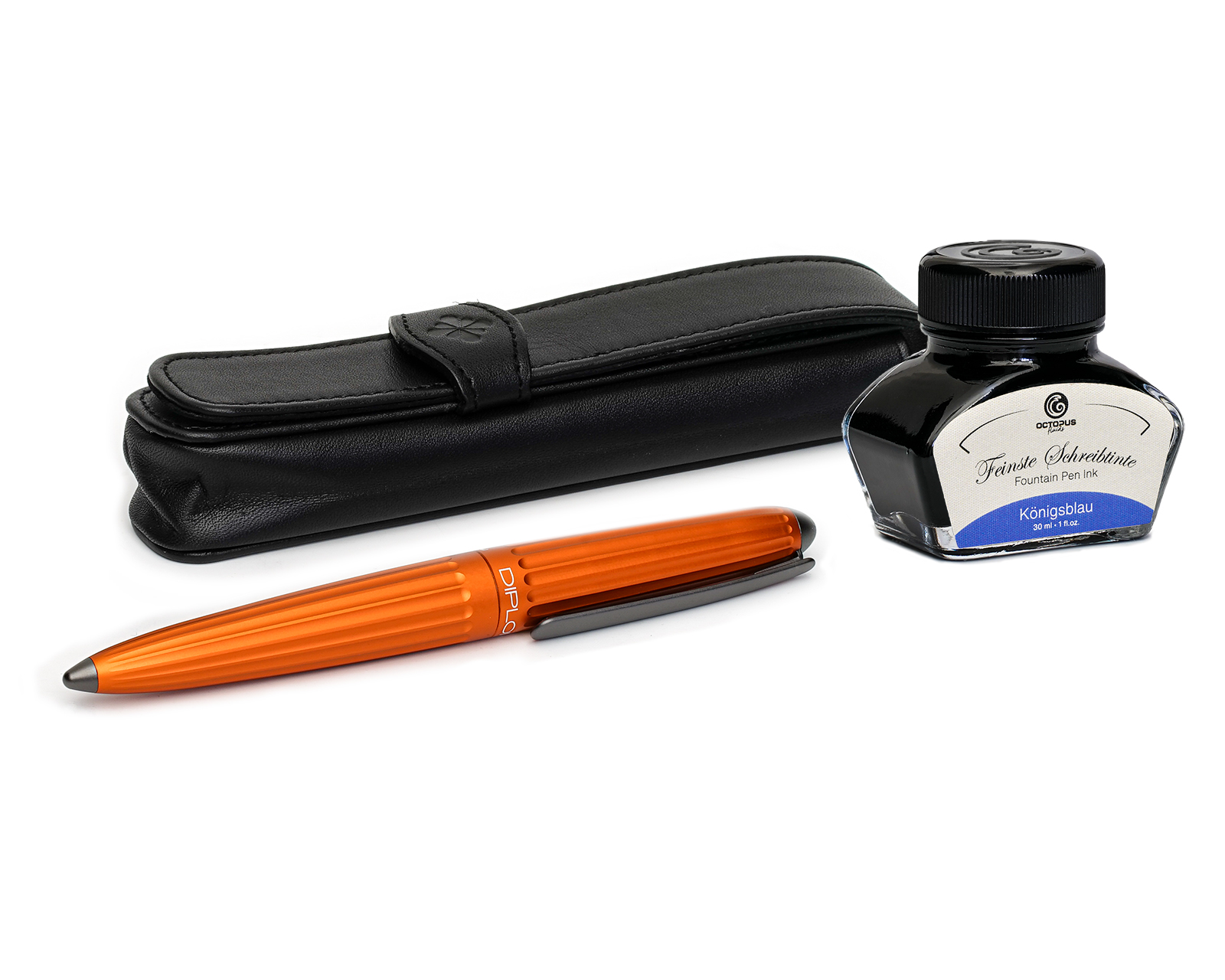The history of ink and its production

What course of development "ink" has taken in the course of time, how its history represents a piece of cultural history as a result of its affiliation with writing - this may be indicated very briefly by the following cursory review of the past.
Just as the higher culture is not conceivable without the art of writing, which records your achievements, so that they can be preserved from oblivion, communicated to the fellow world and preserved and handed down to posterity, - so also the art of writing itself cannot be practiced sufficiently effectively without suitable tools.
The rocks and stones in which the ancient Teutons carved their runes, the bricks and clay vessels of the Assyrians with their cuneiform writings, the heavy ore slabs of the Egyptians and Israelites, the wood and wax tablets of the Phoenicians and Greeks, the leaves and barks of the Indians, into which these peoples often chiseled, cut, burned and carved their characters with the expenditure of tedious labor, were only to a small extent suitable to spread the culture and thereby promote it.
But when one learned to prepare writing materials from very thin and light material, such as parchment and papyrus, and to write with a liquid writing medium, so that the effortlessly in a short time produced pieces of writing took up little space, had very little weight and could therefore be safely and conveniently stored by hundreds and thousands, as well as easily and quickly transported, then by such technical improvements also a cultural progress of the highest importance was achieved. With this time the classical antiquity began.
Therefore, the ink consumption of a people was rightly called the yardstick of its culture and ink was put in the place of Justus v. Liebig's soap: A people that writes little is on a lower level of education.
In the ancient civilized countries of China and Egypt, the first signs of the use of ink were found, the main ingredient of which in both countries was carbon black (soot-containing ink). The inventor of Chinese ink or India ink is said to have been Tien- Tschen, who lived during the reign of Emperor Huangti (2697-2597 BC). In the beginning, it was applied to the silk to be written on with the help of a bamboo stick, and later with a brush on paper, which had been invented in the meantime.
In Egypt, ink writing made of soot has been found on papyrus scrolls, which, despite its age of several thousand years, still retains its blackness and full luster. On mummy robes, however, writings containing silver and platinum have also been discovered.
A rubbing of soot and gum and water was used in Greece under the name (Greek) Schreibschwärze, in Italy as atramentum scriptorium next to the sepia ink prepared from the juice of the squid.
But colored inks were also in use, especially red ones made from minium for headings and initial letters, and furthermore the sacred purple ink sacrum encaustum, which was obtained from the juice of two snail species or conchylia, the purpura or pelagia and the buccinum or murer. This ink, whose dye was probably indigo, was allowed to be used only by the Byzantine emperors; all others were forbidden to use it on pain of death.
Gold writing also played a very important role in antiquity, and chrysography, or the art of writing in gold, became a widespread craft, practiced avidly even by Eastern Roman emperors as a hobby. One wrote on purple parchment either the whole script with gold ink, like the holy scriptures of the Jews for Ptolemy Philadelphus, or only the heading and the remaining text with silver ink, like e.g. Ulfilas' Bible translation in the famous Codex argenteus.
That a kind of iron gall ink was also known in antiquity is evident from a communication of Philo of Byzantium from the 2nd century B.C. about a secret writing, which consisted of writing with gall dissolution, letting it dry, and then wetting the writing with a solution of an iron-containing copper salt.
The black soot ink usually used, however, did not adhere firmly to parchment and papyrus, it could be easily washed off and scratched off, and given its high price, this was exploited by writing on the document again after removing the first writing. Such manuscripts are known as palimpsete, and they often form the most valuable pieces of our archives.
Unfortunately, however, many of them have faded and decayed in the course of time, have become difficult to read or have already completely decayed; the same is true of many simply described manuscripts. However, since these are often documents of the highest historical value, which are irreplaceable, this already shows the importance of the durability of the writing materials to be used for documents.
The fact that the soot ink did not adhere firmly to the writing material, crumbled easily and could be easily removed again, was probably, in addition to its poor writing ability, the main reason why it had to gradually give way to the increasingly naturalized iron gall ink. According to Graux, it had been used only rarely on parchment since the 3rd century A.D., and since the 15th century it was usually no longer used.
Iron gall ink, on the other hand, became more and more popular in the Middle Ages, with the introduction of paper in place of parchment and papyrus playing a major role. Regulations for its production soon began to be drawn up; good ink was a much sought-after article, the production of which was particularly important to the monks, whose occupation included mainly written work.
Thus we find in the "Schedula diversarum artium" of Presbyter Theophilus in the 12th century, but especially in the "Liber illuministarium" collected around 1500 in Tegernsee, a lot of instructions for the preparation of inks of all kinds.
In the 16th and 17th centuries, it was mainly Italians, mostly physicians, to whom we owe records on this subject.
Among them are Cardanus alerius, Pedemontanus, Porta and Caneparius, the latter of whom wrote a thick book "De atramentis cuiuscunque generis" (On inks of all kinds).
Furthermore, the great English naturalist Robert Boyle brought many an enlightenment about the chemical reactions taking place in inks, as did Otto Tachenius and Lemery. Father and son, dealt with the chemistry of ink.
A detailed systematic study of writing inks was then published in 1763 by the Englishman William Lewis, who was followed in 1792 by the Frenchman Ribaucourt with an equally detailed work.
The discovery of gallic acid by Scheele and of tannin by Deneur provided important information on the chemical nature of the tannic and gallic acidic iron formed in Gallus ink, which we owe to a number of German, English and French natural scientists, as well as to the great Swedish chemist Berzelius.
In 1855, August Leonardi started the production of alizarin ink, the first representative of modern iron gall ink, and ten years later, aniline or tar inks appeared on the market as one of the achievements due to the powerful development of the tar ink industry.
However, the durability of official documents and the possibility of their forgery were also given attention by authoritative parties in the 19th century.
Thus, in the first half of the same century, the French government had extensive research carried out in order to obtain ink and paper that would provide the greatest possible security against both the transience of age and the frequent attempts at forgery, and towards the end of the same century, the Prussian government also took steps to prevent, as far as possible, the premature deterioration of documents.
It was prompted to do so by suggestions from expert circles, and the main part in this was played by the firm of August Leonardi. In several petitions to the Chancellor of the Reich and other competent authorities of the Reich and Prussia, the company requested the introduction of official principles for ink testing in the interest of the durability of the documents, had its chemists carry out detailed studies on the chemistry of the inks according to strictly scientific principles and, on the basis of these, published professional methods for testing the inks for their documentary value.
At this point, the modern ink was born. Further developments in writing and, in particular, printing technology prompted ink manufacturers over the years to develop a highly engineered liquid, the evolution of which continues to this day. Today, ink is produced in many places. However, true ink development remains the province of a few companies. As in all industries, development is sometimes the most costly business area.
In 1855 August Leonardi started the production of alizarin ink, the first representative of modern iron gall ink, and ten years later aniline or tar inks appeared on the market as one of the achievements due to the powerful development of the tar ink industry.
However, the durability of official documents and the possibility of their forgery were also given attention by authoritative parties in the 19th century.
Thus, in the first half of the same century, the French government had extensive research carried out in order to obtain ink and paper that would provide the greatest possible security against both the transience of age and the frequent attempts at forgery, and towards the end of the same century, the Prussian government also took steps to prevent, as far as possible, the premature deterioration of documents.
It was prompted to do so by suggestions from expert circles, and the main part in this was played by the firm of August Leonardi. In several petitions to the Chancellor of the Reich and other competent authorities of the Reich and Prussia, the company requested the introduction of official principles for ink testing in the interest of the durability of the documents, had its chemists carry out detailed studies on the chemistry of the inks according to strictly scientific principles and, on the basis of these, published professional methods for testing the inks for their documentary value.
At this point, the modern ink was born. Further developments in writing and, in particular, printing technology prompted ink manufacturers over the years to develop a highly engineered liquid, the evolution of which continues to this day. Today, ink is produced in many places. However, true ink development remains the province of a few companies. As in all industries, development is sometimes the most costly business area.
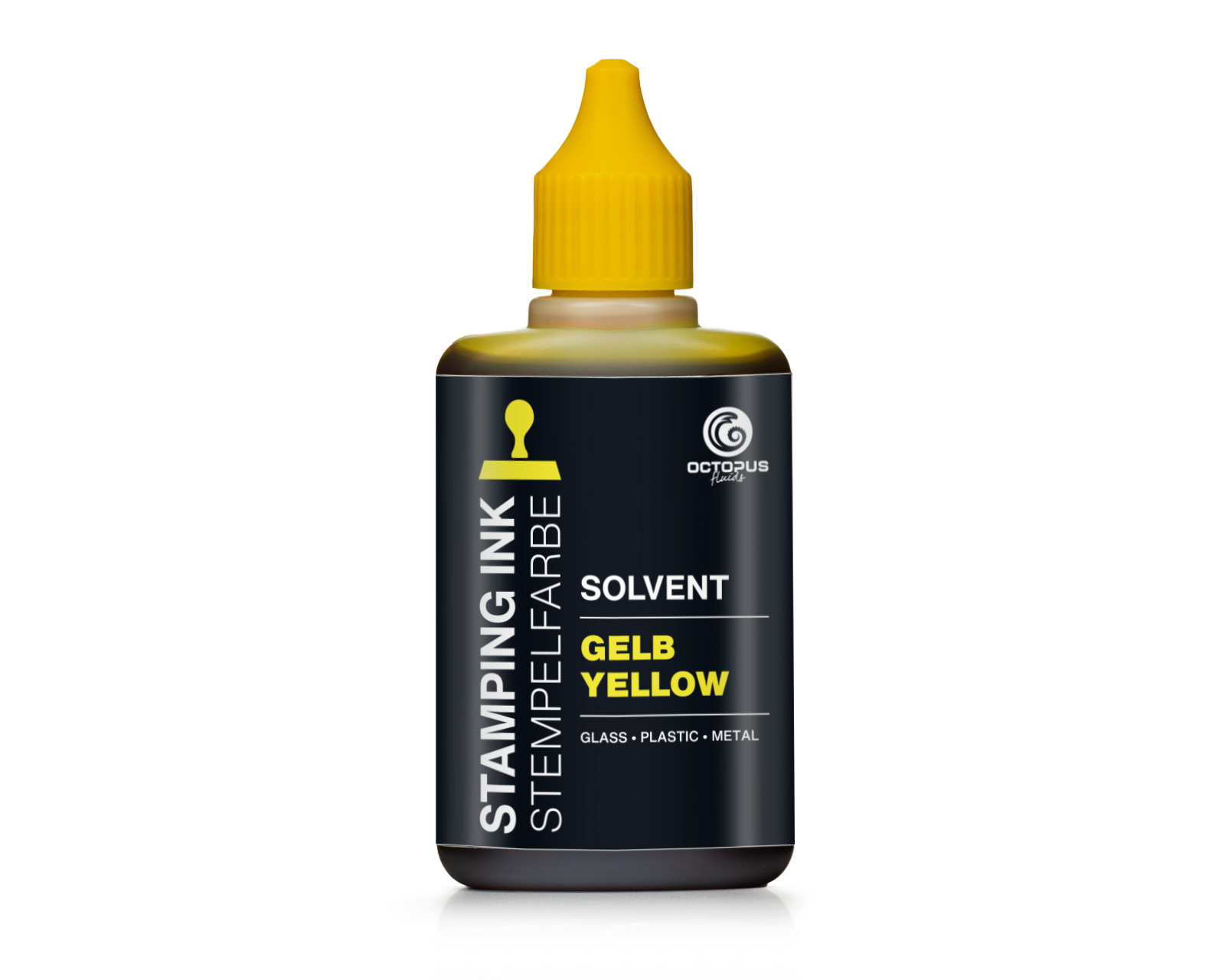 Lenizett Solvent stamping ink for smooth surfaces, yellow
Lenizett Solvent stamping ink for smooth surfaces, yellow
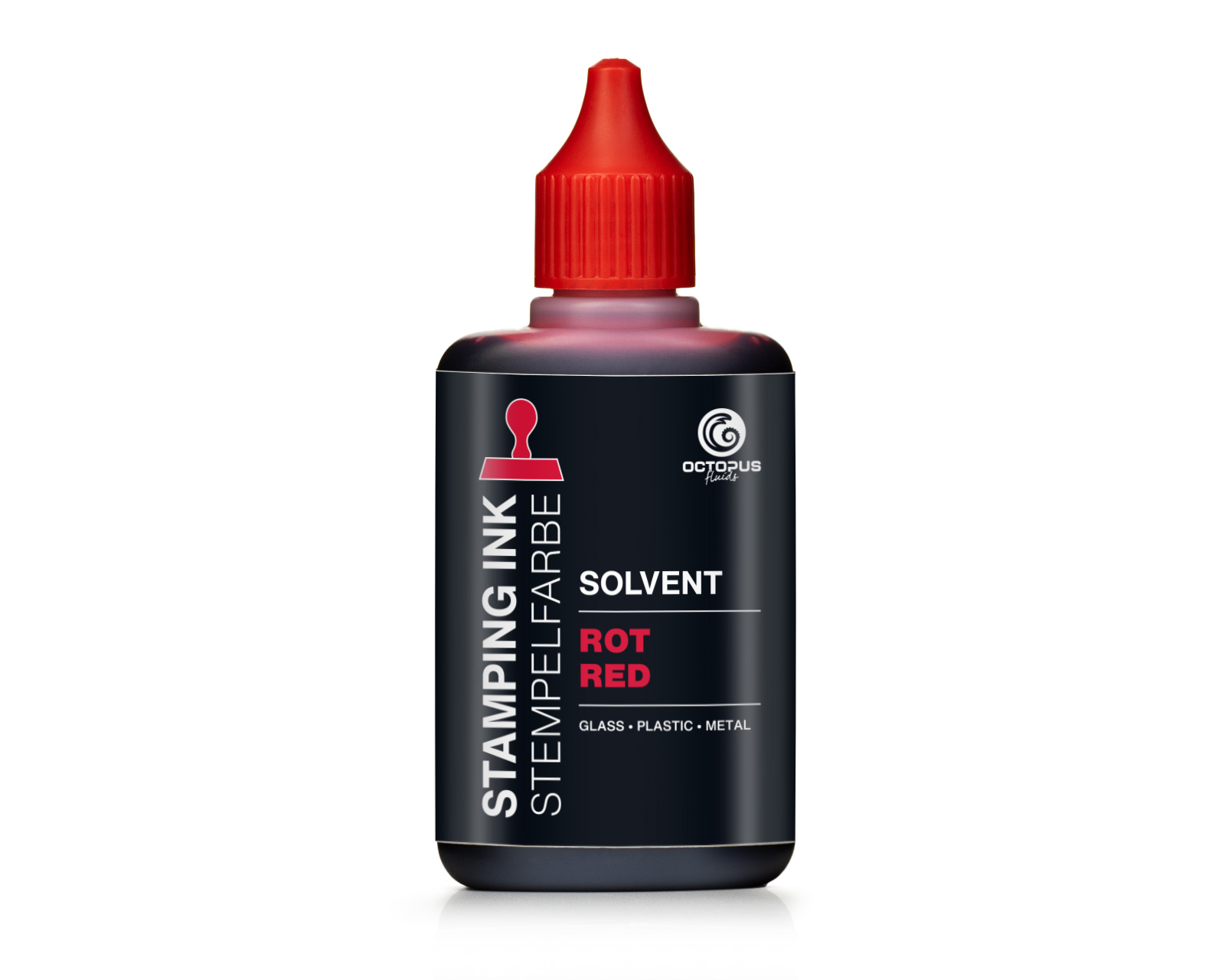 Lenizett Solvent stamping ink for smooth surfaces, red
Lenizett Solvent stamping ink for smooth surfaces, red
 Stamping ink for ink pads and self-inking stamps, oil-free, black
Stamping ink for ink pads and self-inking stamps, oil-free, black
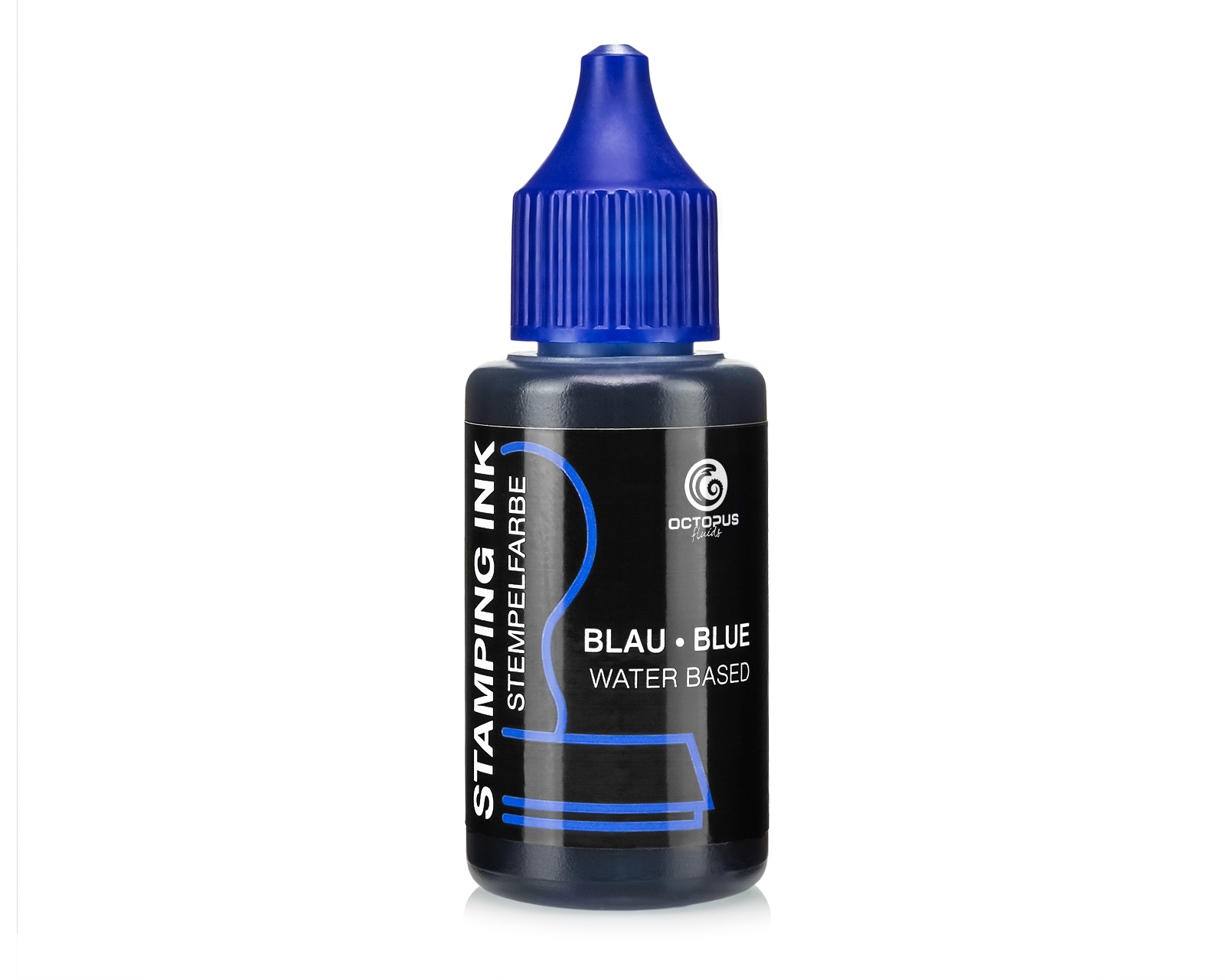 Stamping ink for ink pads and self-inking stamps, oil-free, blue
Stamping ink for ink pads and self-inking stamps, oil-free, blue
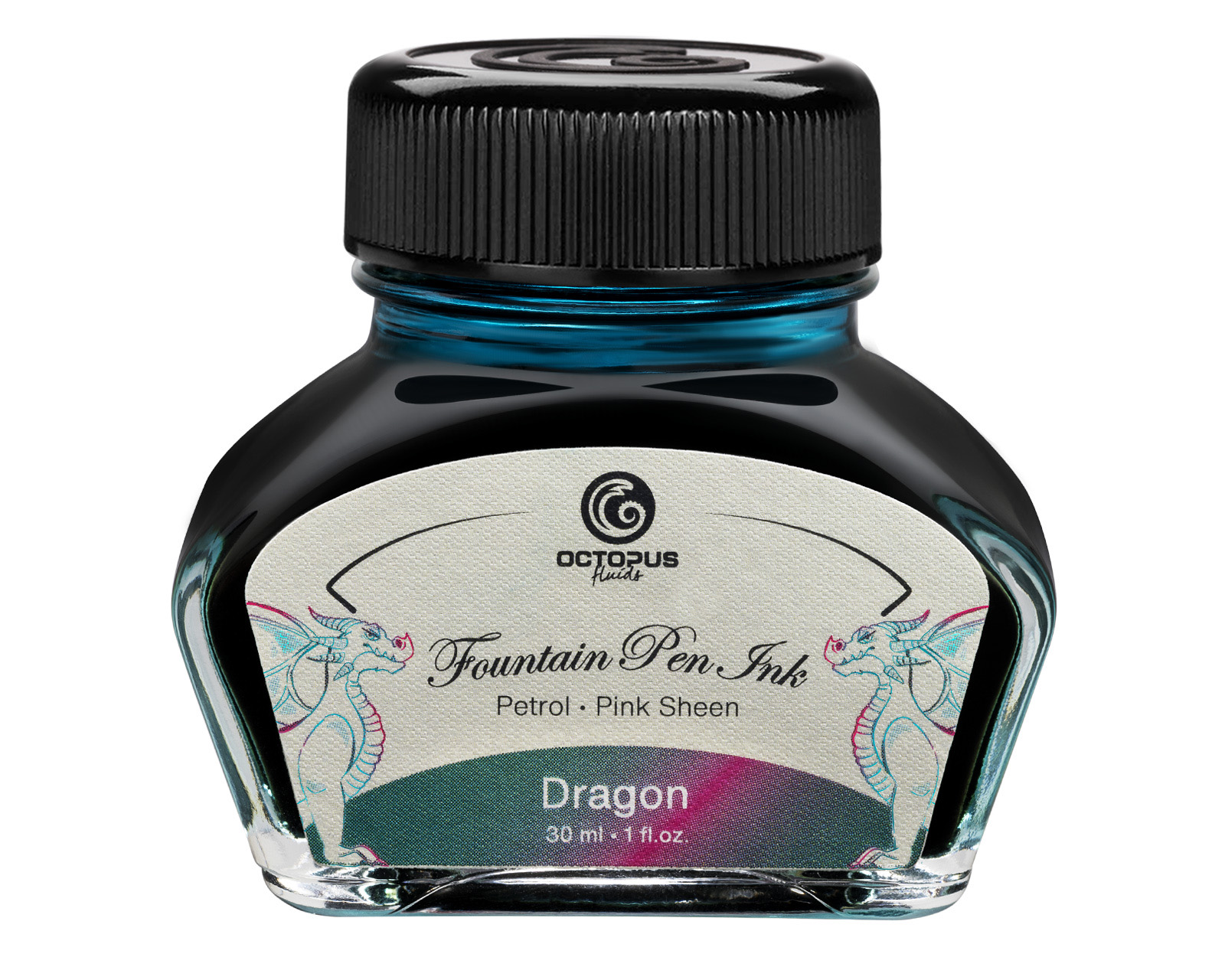 Fountain Pen Ink Sheen, Dragon, Petrol, 30 ml
Fountain Pen Ink Sheen, Dragon, Petrol, 30 ml
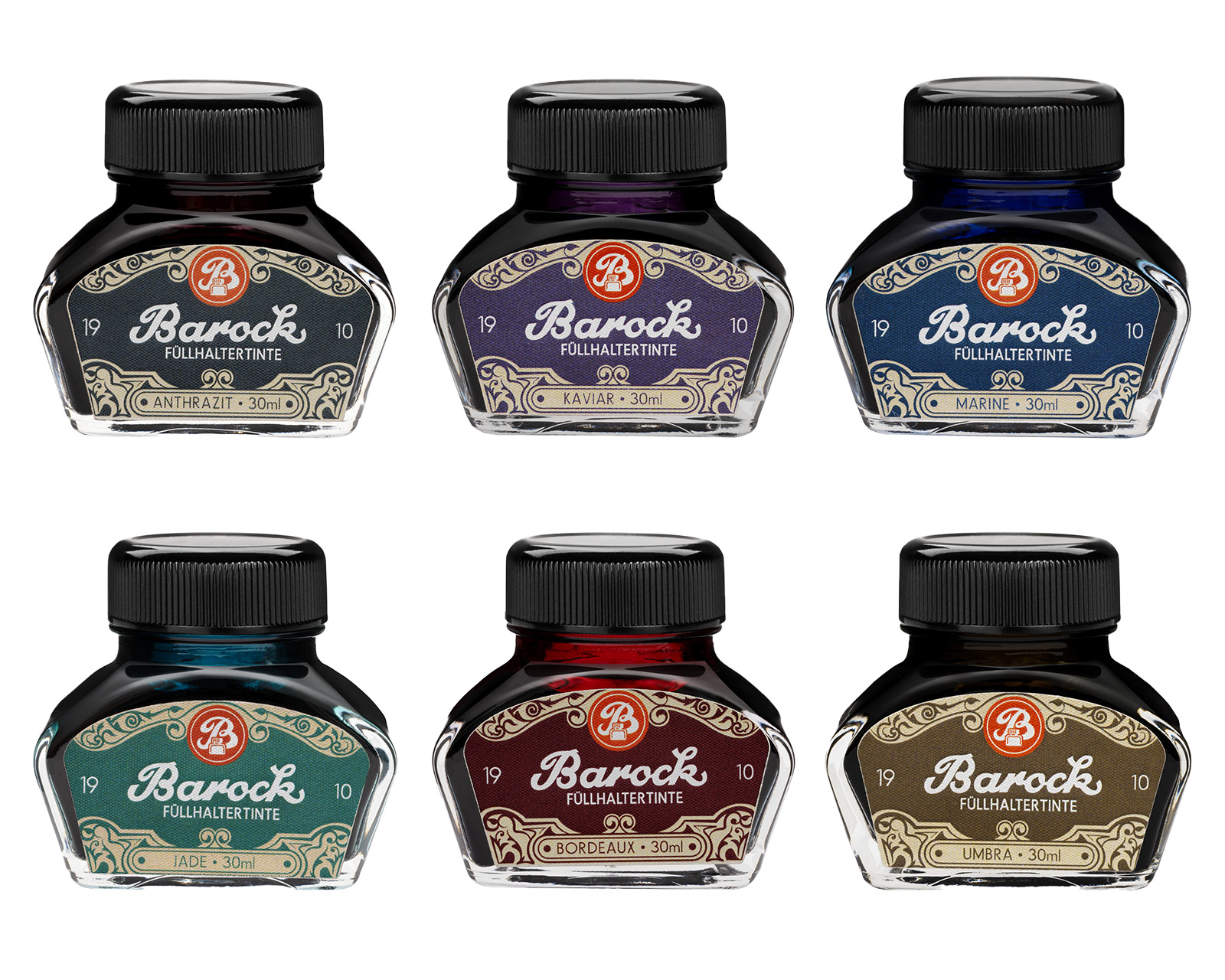 Barock 1910 writing ink, fountain pen ink in 30 ml jar
Barock 1910 writing ink, fountain pen ink in 30 ml jar
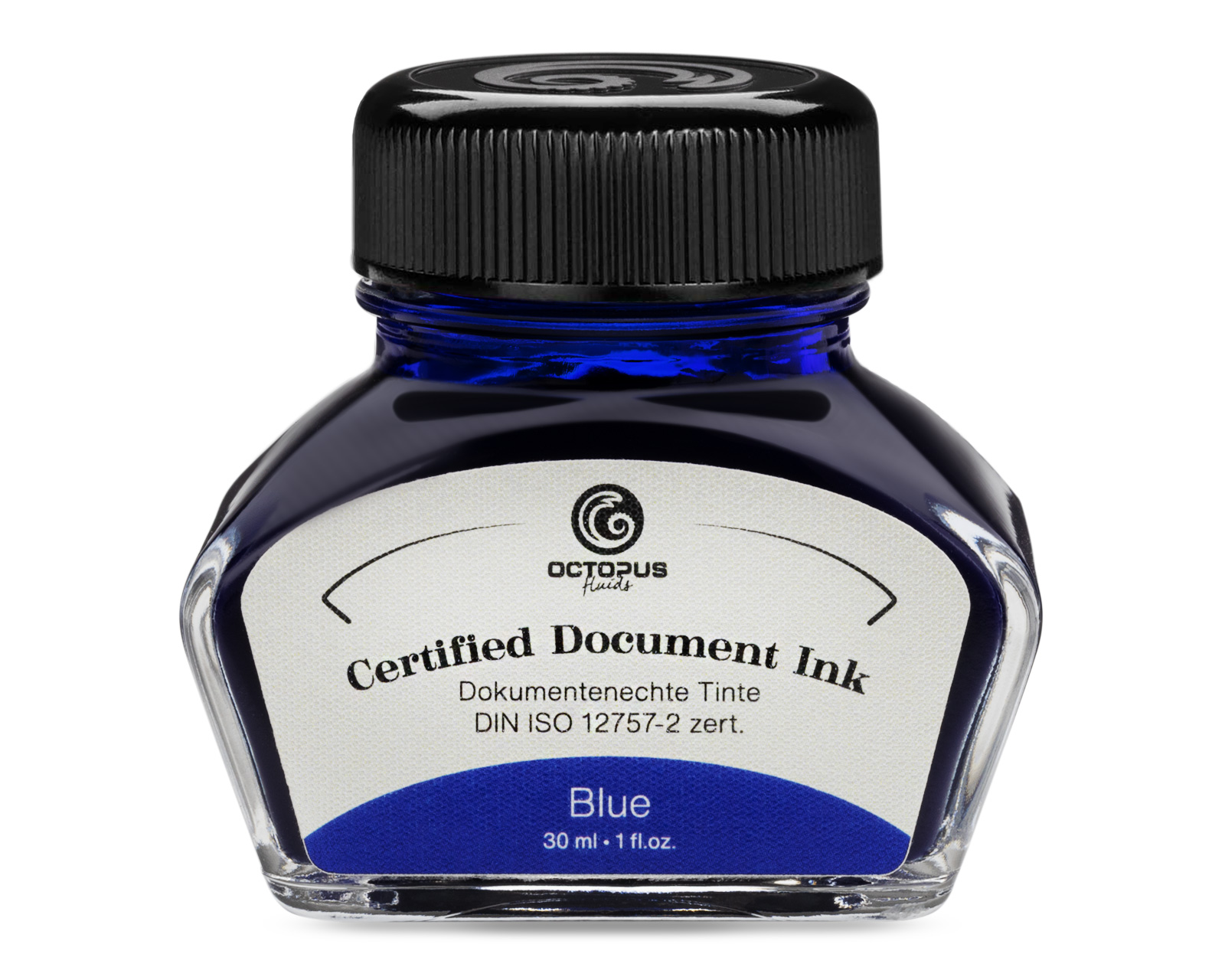 Document Ink blue, document-proof ink, certified according to DIN ISO 12757-2, 30 ml
Document Ink blue, document-proof ink, certified according to DIN ISO 12757-2, 30 ml
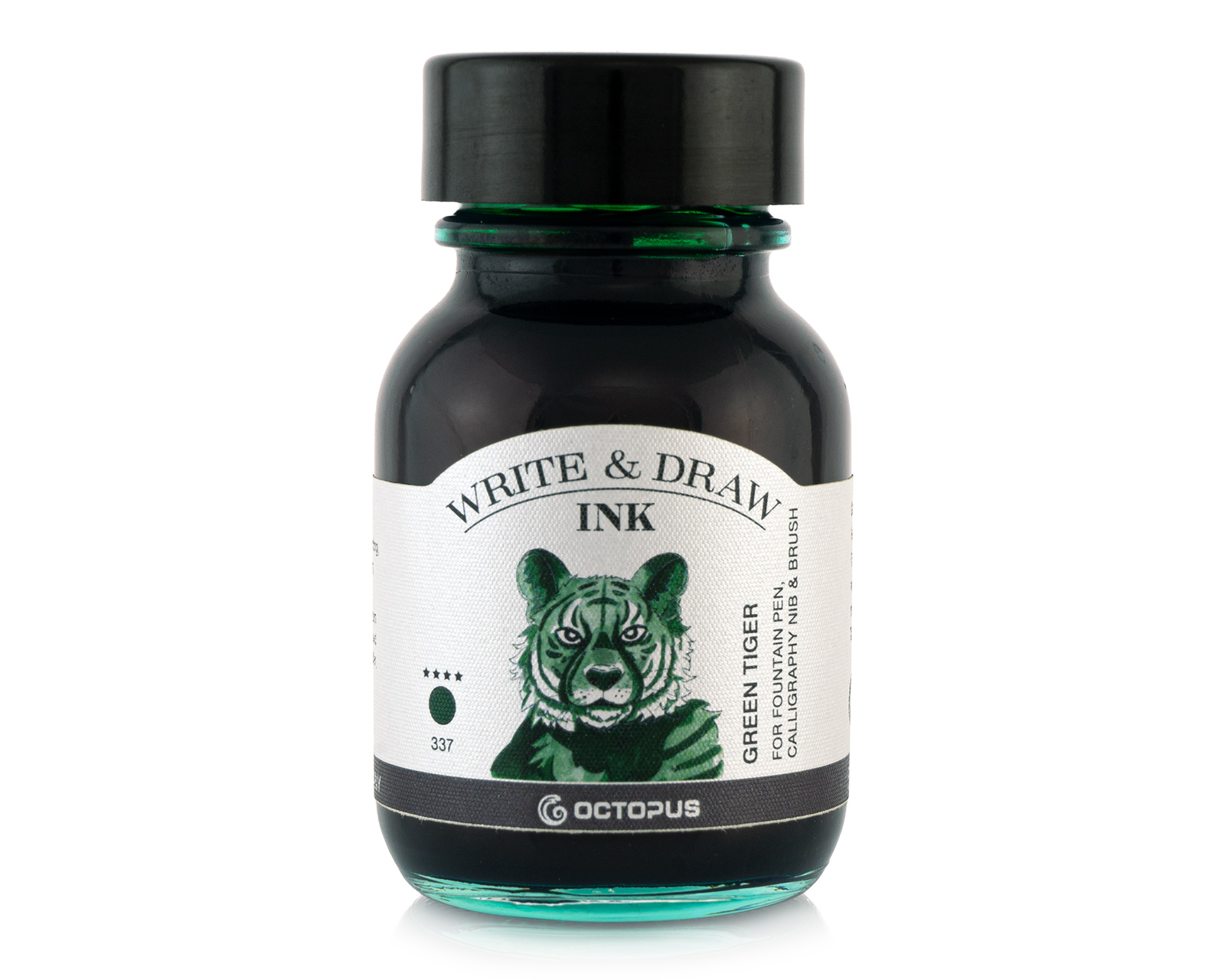 Write and Draw Ink 337 Green Tiger, waterproof drawing ink for fountain pens, 50ml
Write and Draw Ink 337 Green Tiger, waterproof drawing ink for fountain pens, 50ml
Octopus Write & Draw Ink, waterproof ink for fountain pen, nib and brush, vegan
The Octopus Write & Draw inks are unique, smudge-proof and waterproof writing and drawing inks in a wide range of colours. They were developed for daily use in fountain pens and are also popular with graphic artists, illustrators, calligraphers and artists for writing, sketching, drawing and colouring with calligraphy pens, glass pens or brushes.
Each of the 38 brilliant shades inspires with its intense colour power thanks to its high, balanced pigmentation. In addition to a deep black and various shades of grey, the extensive colour palette also includes a particularly opaque white, which can be used on dark backgrounds.
During the development of the drawing ink, special attention was paid to its use in the fountain pen. The use of the finest colour pigments in a carefully balanced formula ensures high light fastness and a good, even ink flow without clogging the ink duct of the fountain pen. These pigmented writing inks also feature the excellent writing behaviour of the classic Octopus fountain pen inks. The Write & Draw drawing ink meets the requirements for document-proof ink according to DIN ISO 12757-2 and DIN ISO 14145-2 and is produced exclusively with vegan ingredients.
Writing enthusiasts love the razor-sharp typeface that can be achieved on fountain pen-suitable paper and the pleasant shading of the Write & Draw writing ink. Calligraphers can create the finest hairlines and impressive flourishing elements, while urban sketchers can draw precise outlines.
The ink dries waterproof in a very short time and can then be painted over with another shade of Octopus Write & Draw ink or watercolour. It is eraser-proof and most of the colours are also highlighter-proof.
Both pure and diluted with water, Octopus Write & Draw ink is excellent for colouring. Used undiluted, the waterproof ink convinces with its opacity. The many colours of Octopus drawing ink can be mixed with each other, but also with water. In this way, countless colour shades can be achieved for beautiful watercolour effects.
Unlike most other waterproof inks, Octopus Write & Draw can be used in a fountain pen without hesitation. However, care should be taken not to let the fountain pen dry out. The water resistance of Write & Draw Inks is created with the help of a cross-linking binder, which cannot be easily dissolved when dry. We therefore recommend that you rinse and clean your writing instrument carefully after use to prevent the ink from drying up accidentally.
The Octopus special cleaner for pigmented inks is available for cleaning your writing Instruments.








